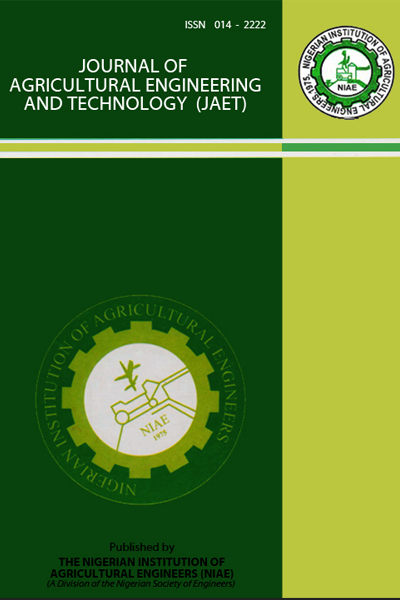ENGINEERING PROPERTIES OF TERMITE MOUND BRICKS AS A CONSTRUCTION MATERIAL FOR AGRICULTURAL BUILDINGS
Keywords:
Termite mound, atterberg limits, Termite compressive strength, properties, plasticity indicesAbstract
The use of termite mound soil as a construction material and as a replacement for clay in brick production
was investigated. This research investigated the physical properties (Moisture Content, Specific Gravity,
Dry-bulk Density, Grain Size Analysis), the Atterberg limits (liquid limit (LL), plastic limit (PL) and
plasticity index (PI)) and engineering properties of termitaria bricks. Mound soil was sourced from two
sites (Tanke, Ilorin (A) and Civil Engineering Department, University of Ilorin, Ilorin (B)). The results of
the physical properties of mound soil from both sites showed that there was no significant difference in
the physical properties. The Atterberg analysis revealed that soil from site A and site B had plasticity
index of 40.57 % and 41.07 % respectively. The average compressive strength of 1.70N/mm2 and 1.52
N/mm2 was recorded after 14 days of curing for sites A and B respectively. The highest average
compressive strength of 2.70 N/mm2 and 2.50 N/mm2 was recorded after 28 days of curing for site A and
site B respectively. This indicated 58.8 % increment in compressive strength for sites A and 64.50 %
increment in compressive strength for site B. These increments in compressive strengths were as a result
of the strong bond between the soil particles as a result of a high percentage of clay and silt and the
elimination of air and water pockets within the brick formation. As a result, soil samples from both sites
are suitable for brick production for agricultural structures such as grain silos and yam barn.


